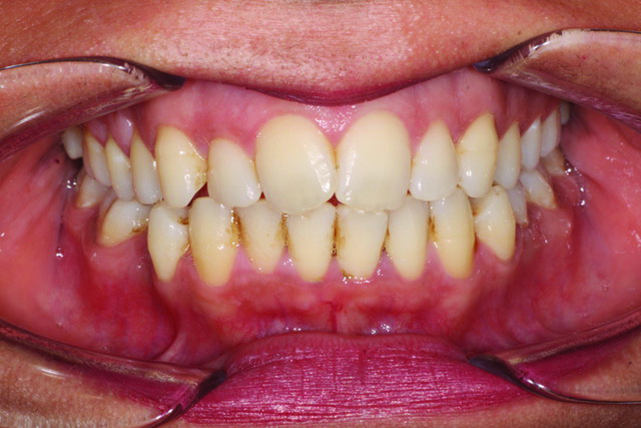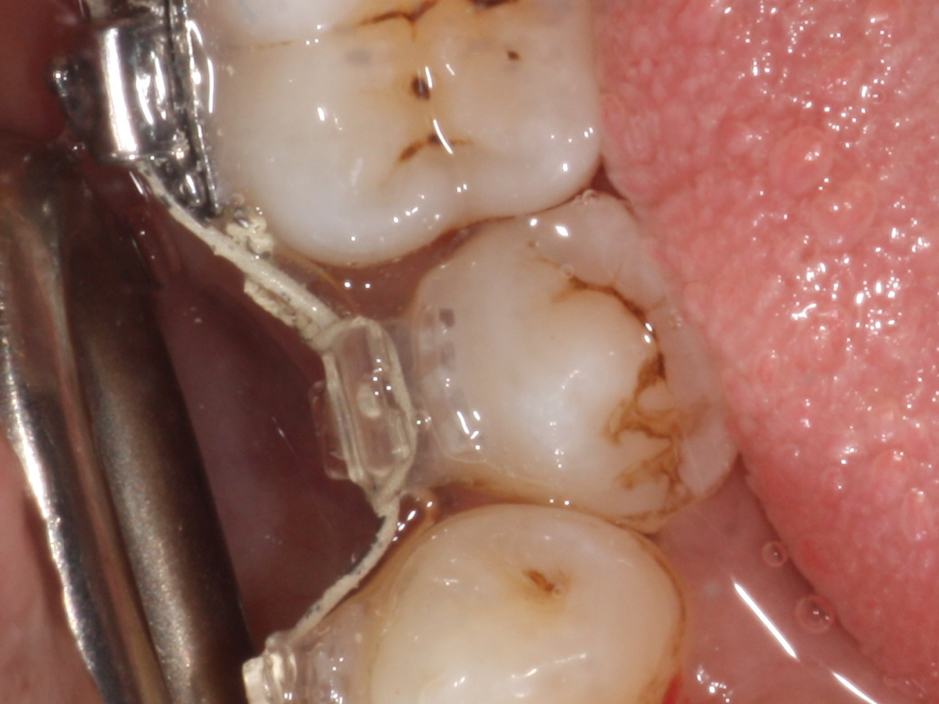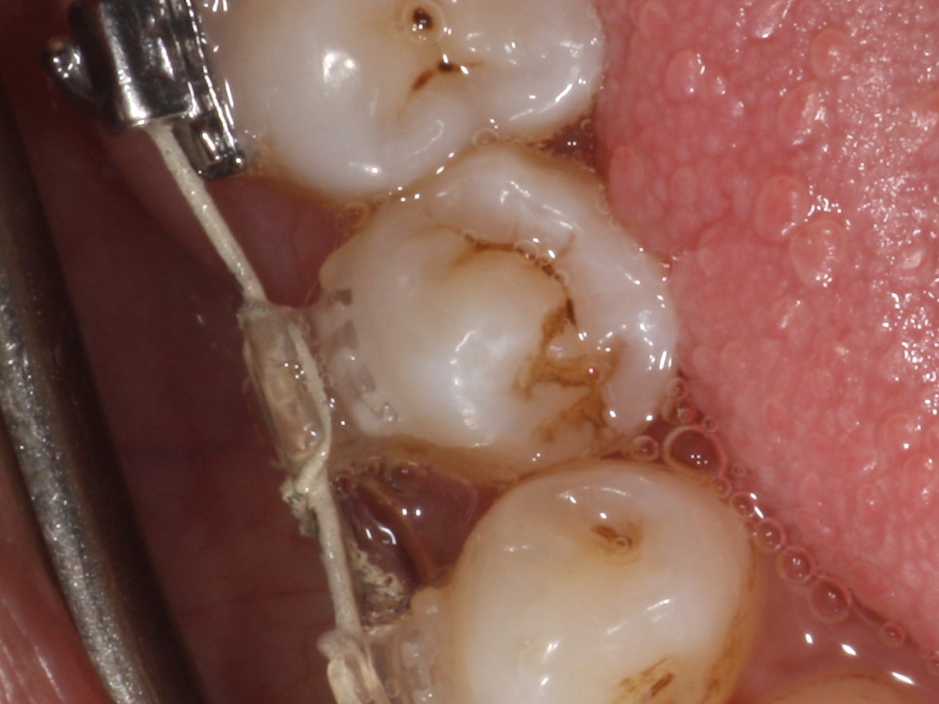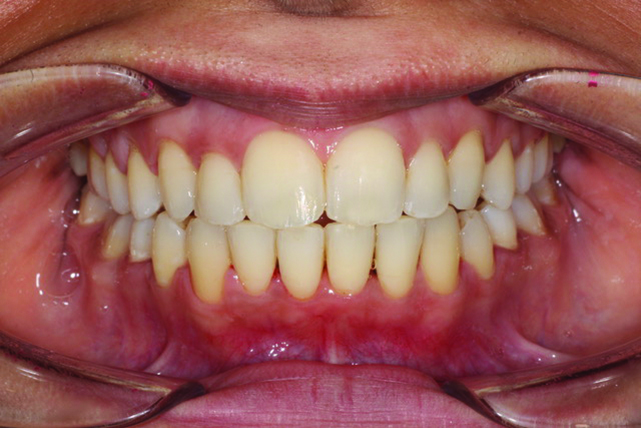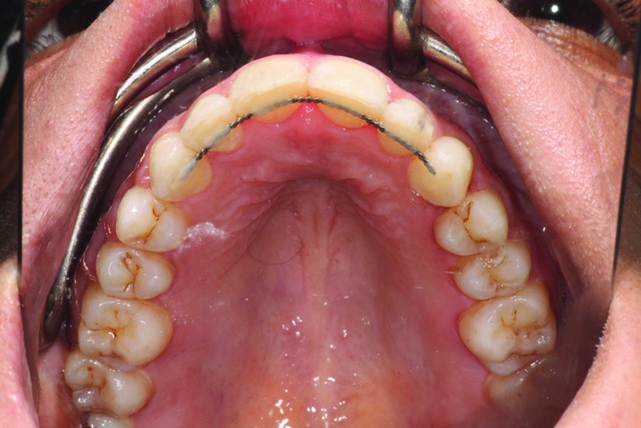Jaswinder Gill presents a Six Month Smiles case study.
A lovely 53-year-old patient attended my practice last year and was very distraught as she was unable to smile due to the position of her front teeth (Figure 1)
She had heard of us from our Google marketing and singled us out by reading the patient testimonials from our website.
She rated her smile around five out of 10, and when asked if we could make it 10 out of 10 how she would feel, she responded with, that would change my life.
I instantly thought, that’s exactly what Six Month Smiles (6MS) does.
On examination, she had 5mm crowding in the lower arch with a lingually positioned LR5 that she wanted corrected (Figures 2 and 3).
Problem list
The problem list was as follows:
- 5mm lower crowding
- 3mm upper crowding
- Cl 3 incisal and molar
- Reduced overbite and incomplete
- Lower 4s in crossbite.
The ideal treatment plan was:
- Reduce crowding
- Bring incisors and molars to Cl 1
- Increase overbite
- Correct crossbite.
Achieving patient consent
I advised comprehensive to correct all the problems as that is the gold standard, but the patient didn’t want the long treatment time to correct the molar relationship so she opted for 6MS with dual retention post ortho.
To obtain correct valid informed consent, I scanned her teeth, took two bitewings and photographs. She was booked in a week to discuss the Confidex treatment plan.
A week later the plan arrived and I was able to show the patient a video of how her teeth will move to the desired position, along with the final photos.
I was also able to discuss with her:
- When, where and how much IPR will be required
- Where and when elastics will be used
- Where and when bite-guards will be placed
- Where and when lingual buttons will be placed
- The initial and post overjet and overbite
- The treatment time along with the level of difficulty of this case.
All along with showing pictures of what elastics look like, what IPR strips do, what bite-guards look like. I firmly believe that this is the correct and only way as the patient is fully informed of the treatment so my consent document includes this information therefore is fully bespoke towards them. Also there are no surprises along the treatment for the patient as everything has been explained from the outset.
I know that I would like to be treated this way, so why shouldn’t our patients? I find that only Confidex enables me to do this.
During treatment
My concerns in this treatment included:
- A Cl 3 patient with more crowding in the lower arch
- Crossed over upper centrals so warned about black triangle formation
- As both arches rounded out I didn’t want to create an AOB.
Fortunately, Confidex helped with all the above points, including:
- I was told when, where and how much IPR to do at the outset to prevent the Cl 3 from getting worse
- The patient could see the final photos and videos, which really helped me in explaining the black triangle concept
- Triangular elastics were advised to be used to help overcome this and correct the crossbite.
Even though I am a clinical instructor, I still use the treatment plan advised by Confidex to help create the desired result, and more importantly, to help me do 6MS in a safe, correct and predictable fashion by achieving valid, informed consent from the outset. I also find that this last point may take an extra appointment, but it also helps me get more patients through recommendations and patient testimonials taken after the consult (www.sloughbracescentre.co.uk/consultation-aftercare.html).
Just look at how when the Confidex plan is used how quickly the teeth move, these two pictures were taken just one month apart (Figures 4 and 5).
Treatment finished a month earlier than planned, as the great thing about Confidex is that it slightly over-estimates the treatment time, which gives you a bit of breathing space, and you are always able to under promise and over deliver (Figures 6, 7 and 8). Figure 9 shows the testimonial of how the patient felt afterwards.
